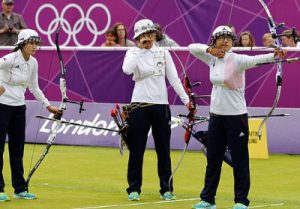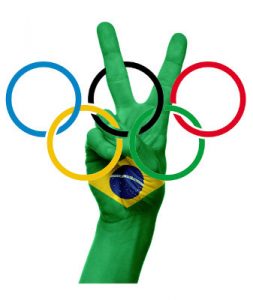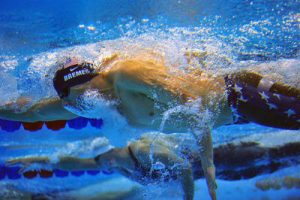In the two week-plus span between August 5th and August 21st, the many far-flung nations of the world will come together in a celebration of athletic competition at the 2016 Summer Olympics in Rio de Janeiro, Brazil. Just like it does every four years, the entire globe will turn its focus towards determined grit and world-class talent in more than 30 events, including soccer, diving, track and field, tennis, synchronized swimming, modern pentathlon, basketball and trampoline. This year marks the first time that a South American city has held the event. About 10,500 athletes from 206 countries are expected to make the trip to Brazil for competing in the games.
In major American sports, players, spectators and referees alike are all interested in making sure that fouls are called properly and that athletes are always abiding by the rules. In recent years, various technologies have been applied to the sports world in order to accomplish these goals. In the National Football League, for example, video replay can be used to challenge a questionable call on the field. Many of these systems currently utilize touchscreen monitors providing high-definition pictures and state-of-the-art communications systems to help officials make the best judgment possible.
In a similar way, many of the athletic events at this year’s Olympics will be sporting new technologies designed to keep the games fair for all competitors. In the days leading up to the opening ceremonies for this year’s Olympics, we wanted to profile some of the innovations that will be seen in Rio de Janeiro which will help players, spectators and refereeing officials alike as we head into the games.
Underwater Counters Keep Swimmers Informed During Races
Within the category of Olympic swimming exists a great variety of events ranging in length anywhere from 50 meters all the way up to 10 kilometers for the open-water marathon. In most events, swimmers must complete laps consisting of racing from one end of a Olympic regulation-sized pool to the other. With some swim meets lasting up to 30 laps, it’s not inconceivable that even a trained professional could lose track of the current lap, which could affect his or her performance.
This year, underwater lap counters providing a digital readout of the current lap should prevent swimmers from losing count of laps, at least in the 800 meter and 1,500 meter freestyle events in which they’ll be used. First used at the 2015 champions for the Fédération internationale de natation (FINA), these counters are designed to replace placards denoting the lap number which are held up by officials. In the future, it’s possible that these counters could display split times for each swimmer to provide them with more information on their performance, although that would require changes in international swimming competition rules. The underwater counters were first approved by FINA in December 2014.
The Olympic Games are not the only upcoming international athletic competitions where swim teams will benefit from a tech innovation. This year’s Paralympic Games, taking place in Rio de Janeiro in September, could see the use of a swim cap technology designed for blind swimmers by Samsung (KRX:005930). Developed in part by the Spanish Paralympic Committee, the caps would be activated by a swim coach when worn by a swimmer to send a vibration to swimmers when they reach the end of the pool and should get ready to turn around. The swim caps would obviate the need for tappers, or foam-tipped rods installed at the ends of a pool which contact a swimmer, indicating the need to turn around.
[Varsity-1]
High-Tech Taekwondo Scoring System Reduces Errors by Human Judges
The Korean martial art form known as taekwondo is included in the Olympic Games as a sparring event. It made its debut during the 1988 Summer Olympics in Seoul, South Korea. In the 2016 Olympics, taekwondo events will take place in four different weight classes for both men and women. To win a match, fighters must land kicks and punches onto an opponent’s torso and head to score points and whoever has the most points at the end of a match wins.
The 2012 Olympics in London saw the debut of the Protective Scoring System (PSS) used to measure the impact of strikes and award points, using a series of sensors in athletic trunks and socks to take some of the human error out of judging a match. This year’s Olympics will see the PSS also incorporate sensors located in the padded headgear of a combatant. The development of PSS technology ramped up in the wake of the 2008 Beijing Olympics when Britain’s Sarah Stevenson, the eventual winner of that year’s bronze medal in taekwondo, was almost eliminated in earlier rounds when a late kick to her opponent’s head wasn’t registered by judges; the error was corrected later after video replay of the match was reviewed.
Archery: A 16th-Century Sport Gets a 21st-Century Scoring System

“Korea London Olympic Archery Women’s Team” by Korea.net/Korean Olympic Committee. Licensed under CC BY-SA 2.0.
Although not the oldest sport at the Olympic Games, archery is a centuries-old activity once used for defense and hunting which is now mainly used as a competition in long-distance target accuracy. The 10 rings of a regulation target each correspond to a number of points between one and 10 which are awarded to archers shooting at the 1.22 meter target face from a distance of 70 meters.
The official website of the 2016 Olympics in Rio quotes the organization’s archery manager, Luis Eduardo Almeida, as saying that this year’s archery competition will utilize a new electronic scoring system. Instead of relying on the human eye to judge which scoring ring an arrow is hit, the new electronic system can detect the exact placement of an arrow within a distance of 0.2 millimeters. The new scoring system also takes a lot of suspense out of the scoring process as an archer’s score is updated and displayed within one second of an arrow hitting the target.
Spectators Get a New View on Weightlifting, Canoe Competitions

“Olympic Lifter Svetlana Podobedova at the 2012 Olympic Games in London” by Materialscientist. Licensed under CC BY 2.0.
Not every innovation making an appearance at the Summer Olympics in Rio are designed to improve the flow of athletic competition. In some instances, tech developers have kept the many millions of audience members from around the world in their focus. In some ways, spectators will be able to connect with this year’s Olympics more closely than they ever have before.
One such spectator technology is the use of a camera dolly which will give weightlifting fans a new perspective on those competitions. Instead of being limited to a front view of a competitor, the camera dolly will capture multiple angles of weightlifters in order to paint a fuller picture of the body mechanics involved in each lift.
Keeping tabs on a certain country’s canoe teams will be made easier with the help of a GPS tracking system developed in part by the International Canoe Federation (ICF). The system involves the mounting of a GPS sensor onto each boat which will track not only a canoe’s position but also its speed and direction. The GPS system was first tried during last June’s Olympics canoe competition test event at Lagoa Rodrigo de Freitas.

![[IPWatchdog Logo]](https://ipwatchdog.com/wp-content/themes/IPWatchdog%20-%202023/assets/images/temp/logo-small@2x.png)




![[Advertisement]](https://ipwatchdog.com/wp-content/uploads/2024/04/Patent-Litigation-Masters-2024-sidebar-early-bird-ends-Apr-21-last-chance-700x500-1.jpg)

![[Advertisement]](https://ipwatchdog.com/wp-content/uploads/2021/12/WEBINAR-336-x-280-px.png)
![[Advertisement]](https://ipwatchdog.com/wp-content/uploads/2021/12/2021-Patent-Practice-on-Demand-recorded-Feb-2021-336-x-280.jpg)
![[Advertisement]](https://ipwatchdog.com/wp-content/uploads/2021/12/Ad-4-The-Invent-Patent-System™.png)







Join the Discussion
No comments yet.